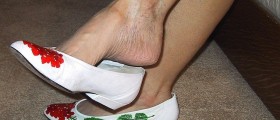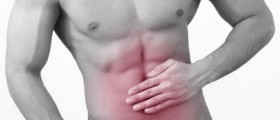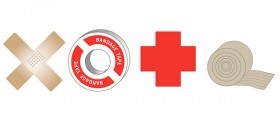
Venous ulcers are rather painful sores that typically form on lower extremities and are associated with inappropriate circulation and venous stasis. Such skin lesions are considered the major cause of chronic wounds. In the majority of cases venous ulcers affect the medial distal leg.
The condition predominantly affects older individuals ans is never diagnosed in children.
Venous Leg Ulcers Pathophysiology
Veins in legs contain specific valves which prevent backflow of blood caused by the gravitational force. In case these valves fail to perform their duty, the blood remains inside lower portions of veins and this condition is known as venous stasis. Venous stasis increases the pressure inside these blood vessels.
The body normally requires proper pressure gradient between arteries and veins necessary for pumping blood forward through arteries and into veins. So, in case the pressure inside veins becomes high, this gradient is no longer sufficient enough and blood, since it is not pumped further towards the heart, remains in veins and pools.
The presence of increased venous pressure stretches the veins and also contributes to backflow of blood into superficial veins. The area around dilated superficial veins becomes edematous, the skin eventually becomes restricted from sufficient blood supply and venous eczema develops. Finally, a venous ulcer forms on skin areas most affected by insufficient supply of nutrients.
Venous Leg Ulcers Treatment and Prevention
Even though there are several treatments available, venous ulcers are usually recurrent problem and quite difficult to treat.
Most ulcers of this type respond well to a so called Bisgaard regimen. Compression treatment is efficient against regurgitation of blood. As a result, swelling due to fluid leakage from capillaries is reduced. Also, this improves circulation through arteries which are now able to deliver sufficient amounts of nutrients to accelerate healing. Pentoxifylline is a drug efficient when used alone or together with compression. The sore may also heal with the assistance of artificial skin comprising collagen and cultured skin cells. And finally, surgery may deal with superficial venous reflux and this way reduce recurrence of ulcers for certain period of time.
As for prevention, it is essential to avoid all the activities such as prolonged sitting or standing that cause venous stasis and all subsequent problems. Obese patients must lose weight and those within initial stage of venous stasis may use compression hosiery and this way reduce swelling.
Prevention of recurrent ulcers includes wearing compression hosiery, adequate treatment of all underlying conditions (diabetes, RA etc.) and specific types of vascular surgery.

















Your thoughts on this
Loading...